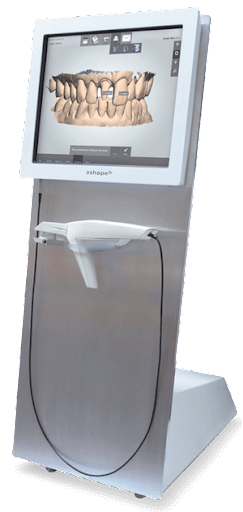Dental implants have long relied on titanium as the go-to material because of its many advantages. Despite its proven long-term success in the way of functionality and stability, however, titanium implants often face challenges related to soft tissue recession. To address this issue, zirconia abutments have emerged as a potential solution. They minimize soft tissue recession and conceal the metallic appearance of titanium.
The following will explore the dilemma: zirconium vs. titanium dental implants.
Zirconia – The New Kid on the Block

The introduction of new dental implant systems made from zirconia has, in recent years, sparked interest. But further research is necessary to fully understand their long-term effects. What’s more, clinicians need a comprehensive understanding of the technical challenges associated with using zirconia implants to minimize the risk of mechanical failures.
Zirconia implants offer a great alternative for individuals with thin gingival tissues and those who need metal-free dental implants. While allergic reactions to titanium implants are very rare, some people might be sensitive to other metals present in the alloy. This leads to concerns about having any form of metal in their bodies.
Zirconia’s natural white color provides an aesthetically appealing option. It also supports bone preservation and the promotion of superior gingival health. The gum tissue surrounding ceramic materials tends to be healthier. Why? Specifically, it’s because zirconium is inert and resistant to corrosion. As a matter of fact, a study on ceramic implants in animals showed reduced pocket depth and improved soft tissue attachment compared to standard titanium implants.
Titanium – Studies Upon Studies
Extensive studies over an extended period of time have solidified titanium dental implants’ reputation for high survival and success rates across various applications. But titanium implants may present aesthetic challenges, especially when restoring anterior teeth. Through the peri-implant mucosa, the grayish color of the implant can become visible if soft tissue recession occurs – or if the patient has naturally thin gingival tissue.
Titanium Versus Zirconia – The Final Weigh-In
Titanium and zirconia are the only elements that won’t hamper implant integration with bone. Zirconia dental implants exhibit similar success rates to titanium implants. Currently, the majority of clinicians favor titanium implants due to their extensive research history, providing added confidence and reassurance in their recommendations.
But, for patients prioritizing aesthetics, zirconia may be the preferable choice – especially for dental patients with metal sensitivities.
Which Is Better for Your Dental Needs? Zirconium or Titanium? Next Dental Lab Can Help You Decide
When it comes to the materials used for crowns and bridges and other dental procedures – as well as the techniques and equipment – we operate on the cutting edge. We are aware of and well-versed in the latest developments regarding any and all dental procedures, techniques, digital scanning, machinery, materials, and more.
If you have questions or concerns about your dental health or treatments that you would like to discuss with one of our professionals, we encourage you to get in touch. We’d be happy to speak with you.

